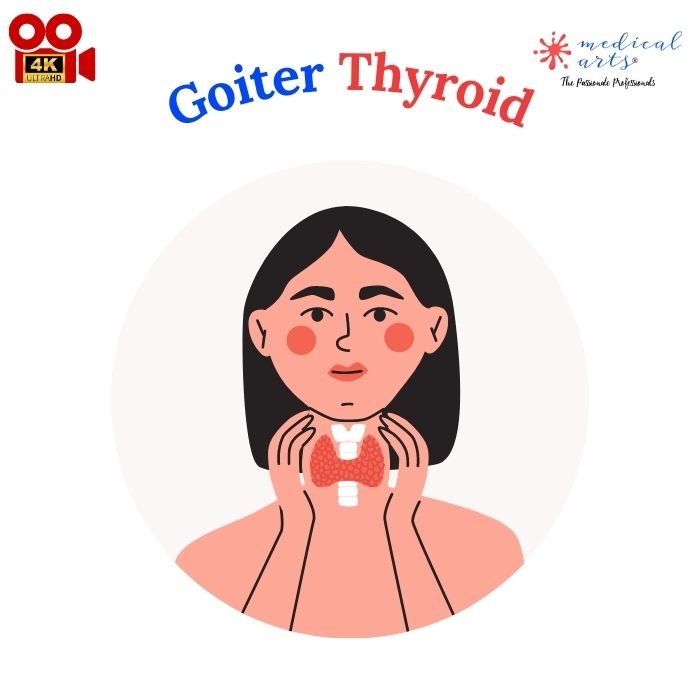The article is still under construction (Graphics coming soon!)
Thyroid Gland
The thyroid gland, a butterfly-shaped organ located in the front of the neck, produces thyroid hormones critical for various body functions, including metabolism. A goiter refers to the abnormal enlargement of the thyroid gland. Though goiters are usually benign, understanding the underlying causes and implications can empower patients to make informed decisions about their health.
What Causes Goiter?
Several factors can lead to the development of a goiter:
- Iodine deficiency Historically, a lack of dietary iodine was the most common cause of goiter worldwide. Our thyroid needs iodine to produce thyroid hormones. In areas where iodine is scarce in the diet, the thyroid enlarges to absorb more iodine. Thankfully, iodine deficiency has become less common in many parts of the world due to iodized salt and other iodine-fortified foods.
- Hashimoto's thyroiditis is an autoimmune condition where the body's immune system attacks the thyroid gland. It can lead to inflammation and enlargement of the thyroid.
- Graves' disease Another autoimmune disorder, Graves' disease, leads to an overactive thyroid (hyperthyroidism) and can cause the gland to enlarge.
- Nodules Overgrowths or lumps within the thyroid can lead to enlargement. These nodules can be benign or malignant (cancerous).
- Thyroid cancer Though less common, thyroid gland cancer can present as a goiter.
- Pregnancy Human chorionic gonadotropin (HCG), a hormone produced during pregnancy, can cause slight thyroid enlargement in some women.
Symptoms and Presentation
A visible or palpable lump in the front of the neck is the most obvious sign of a goiter. However, depending on its size and location, other symptoms may include:
- Difficulty swallowing
- Shortness of breath or difficulty breathing (especially when lying flat)
- Coughing
- Hoarseness or voice changes
- Neck vein distention and dizziness when the arms are raised above the head (Pemberton's sign)
It's important to note that the presence of a goiter doesn't necessarily mean that the thyroid gland isn't functioning correctly. Goiters can occur with an underactive, overactive, or normally functioning thyroid.
Diagnosis and Treatment
If a goiter is suspected, the following diagnostic tests may be recommended:
1. Physical examination A physician will palpate the neck to determine the goiter's size, consistency, and location.
2. Blood tests To assess thyroid function, levels of thyroid-stimulating hormone (TSH), triiodothyronine (T3), and thyroxine (T4) might be checked.
3. Ultrasound This imaging technique visualizes the thyroid and can detect nodules, cysts, and tumors.
4. Fine needle aspiration (FNA) If nodules are detected, an FNA may be conducted to determine if they are benign or malignant.
Treatment options
vary depending on the cause and size of the goiter. They may include:
- Observation Small goiters that aren't causing symptoms and don't have suspicious nodules should be monitored.
- Medications Thyroid hormone replacement pills can be prescribed for an underactive thyroid. Anti-thyroid medications or radioactive iodine might be recommended for an overactive thyroid.
- Surgery Large goiters causing symptoms or those suspicious of cancer may necessitate surgery.
Conclusion
A goiter is more than just a visible enlargement in the neck; it is a symptom of underlying conditions that might require medical attention. Early diagnosis and treatment are crucial in ensuring the best outcomes. If you suspect you have a goiter or are experiencing thyroid-related symptoms, consult your primary care physician or an endocrinologist.
Remember, every individual is unique, and your healthcare journey should always be based on personalized advice from your medical practitioner. Stay informed, stay proactive, and prioritize your health.

